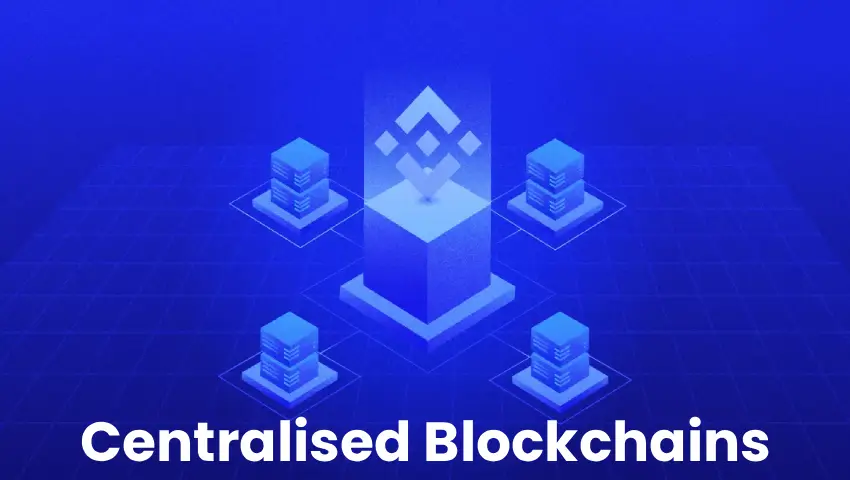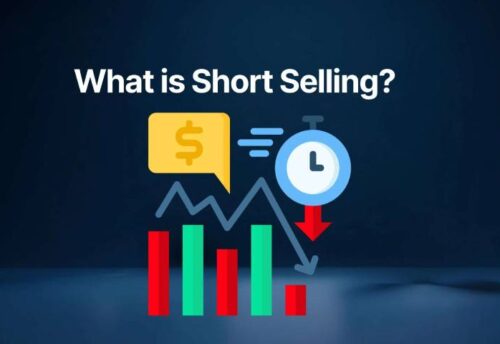
- 30/08/2025
- MyFinanceGyan
- 427 Views
- 2 Likes
- Cryptocurrency, Investment
What Are Centralised Blockchains?
When most people think of blockchain, the first names that come to mind are Bitcoin and Ethereum. These cryptocurrencies run on decentralised blockchains, where no single authority has control, and transactions are secured through cryptographic mechanisms. But blockchain technology isn’t limited to public cryptocurrencies. An equally important segment is centralised or private blockchains—enterprise-grade solutions designed for businesses and governments.
These blockchains combine the security benefits of blockchain with controlled access, ensuring that sensitive data remains private and manageable. In simpler terms, while decentralised blockchains give control to everyone, centralised blockchains restrict control to a specific organisation or a select group of participants.
Types of Blockchains:
Blockchain networks are broadly classified into three categories:
Public Blockchains:
- Open to everyone, no permission required.
- Anyone can view transactions, join the network, or validate blocks.
- Examples: Bitcoin, Ethereum, Cardano.
Private (Permissioned) Blockchains:
- Controlled by a central authority.
- Access requires approval, and permissions can vary—some users may only see parts of the blockchain, while others may access the full ledger.
- Examples: Hyperledger Fabric, R3 Corda.
Federated (Consortium) Blockchains:
- Semi-decentralised in nature.
- Data may be visible to the public, but block validation is restricted to pre-selected entities (e.g., a group of banks or institutions).
- Useful for industry collaborations where trust is shared among a few stakeholders.
In this article, we refer to any blockchain that is not public as a centralised blockchain, since access and control lie with a limited number of participants.
Examples of Centralised Blockchains in Action:
Central Bank Digital Currencies (CBDCs):
One of the most significant applications of private blockchains is in CBDCs—digital versions of a country’s fiat currency.
- A CBDC leverages blockchain for fast and secure transactions, while still being backed by a central authority.
- Governments may choose to keep CBDC transactions private or partially visible, depending on policy.
- In federated CBDCs, validation may involve multiple banks or financial institutions, even though the central bank controls issuance.
This approach combines the innovation of crypto with government-backed stability.
Stablecoins:
Popular stablecoins like Tether (USDT) and USD Coin (USDC) are also forms of centralised blockchain tokens.
- These coins are fiat-collateralised, meaning each token is backed by an equivalent reserve of U.S. dollars held by trusted institutions.
- Unlike Bitcoin or Ethereum, they cannot be mined. New tokens are issued only when fresh reserves are added.
- Validation and control rest with centralised entities:
- USDT is managed by TetherDAO.
- USDC is issued and controlled by Circle.
This centralisation ensures stability and compliance but reduces decentralised freedom.
Private Blockchain Services:
Several companies design enterprise-grade private blockchain solutions tailored for specific industries.
- Ripple: For cross-border payments and financial transactions.
- Hyperledger Fabric: Used by Walmart to track supply chains and ensure product authenticity.
- R3 Corda: Popular in banking and financial services.
- Enterprise Ethereum: A private version of Ethereum for business use.
Real-world examples:
- Walmart uses a Hyperledger Fabric-based system to trace products from origin to shelves, ensuring transparency in supply chains.
- De Beers Group uses its Tracr blockchain to track diamonds, guaranteeing authenticity and proving they are not sourced from conflict zones (“blood diamonds”).
Centralised vs. Decentralised Blockchains:
Both centralised and decentralised blockchains have unique advantages:
- Decentralised Blockchains (Bitcoin, Ethereum): Transparency, trustless systems, community-driven.
- Centralised Blockchains (Private, Federated): Privacy, efficiency, enterprise control, regulatory compliance.
For businesses handling sensitive data—such as banks, healthcare providers, and logistics companies—centralised blockchains are often the more practical choice.
Final Thoughts:
While decentralised tokens like Bitcoin and Ethereum dominate headlines, centralised blockchains are quietly powering some of the most impactful enterprise solutions. They provide organisations with secure, transparent systems—while maintaining control over who can access sensitive information. As blockchain technology continues to evolve, both centralised and decentralised approaches will coexist, each serving different but equally important purposes in the digital economy.
Start your journey into crypto today. Open a free account on CoinDCX: https://join.coindcx.com/invite/n75xR
Note: This article is for educational purposes only. The views expressed are personal and not intended as investment advice.



